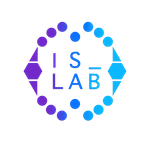E. Myrgioti, N. Bassiliades, A. Miliou, “Bridging the HASM: An OWL ontology for modelling the information pathways in haptic interfaces software”, Expert Systems with Applications, Elsevier, Vol. 40, No. 4, pp. 1358-1371, 2012.
Author(s): E. Myrgioti, Nick Bassiliades, A. Miliou
Appeared In: Expert Systems with Applications, Elsevier, Vol. 40, No. 4, pp. 1358-1371, 2012.
Keywords: Haptic devices, Tactile displays, Tactile information, Haptic-Tactile interfaces, Human-computer interaction, Ontology.
Tags:
Abstract: Haptics technology has received enormous attention to enhance human computer interaction. The last decade has witnessed a rapid progress in haptic application software development due to the fact that the underlying technology has become mature and has opened up novel research areas. In an attempt to organize the path between cause and effect we envision a need for a standard for haptic application softwaremodeling. In order for the software to better enhance the tactile information sensation, flow and perception and also make interaction between humans and haptics more efficient and natural, we need a formal representation of the haptics domain. This article proposes the use of HASM, a haptic applications softwaremodelingontology to formally model the haptics domain in order to be used during the specifications and design phases of developing software applications for hapticinterfaces. The presented ontology captures the existing knowledge in haptics domain, using OWL, and defines the pathways that the hapticinformation follows between the human and the machine haptic system, using SWRL rules. The hapticontology that has been developed will be used as a basis to design effective user interfaces and assist the development of softwaremodeling for haptic devices. A case study is demonstrating how this hapticontology can be used to design a software model that analyzes the perception of a haptic property of an object by interacting with a haptic device.
